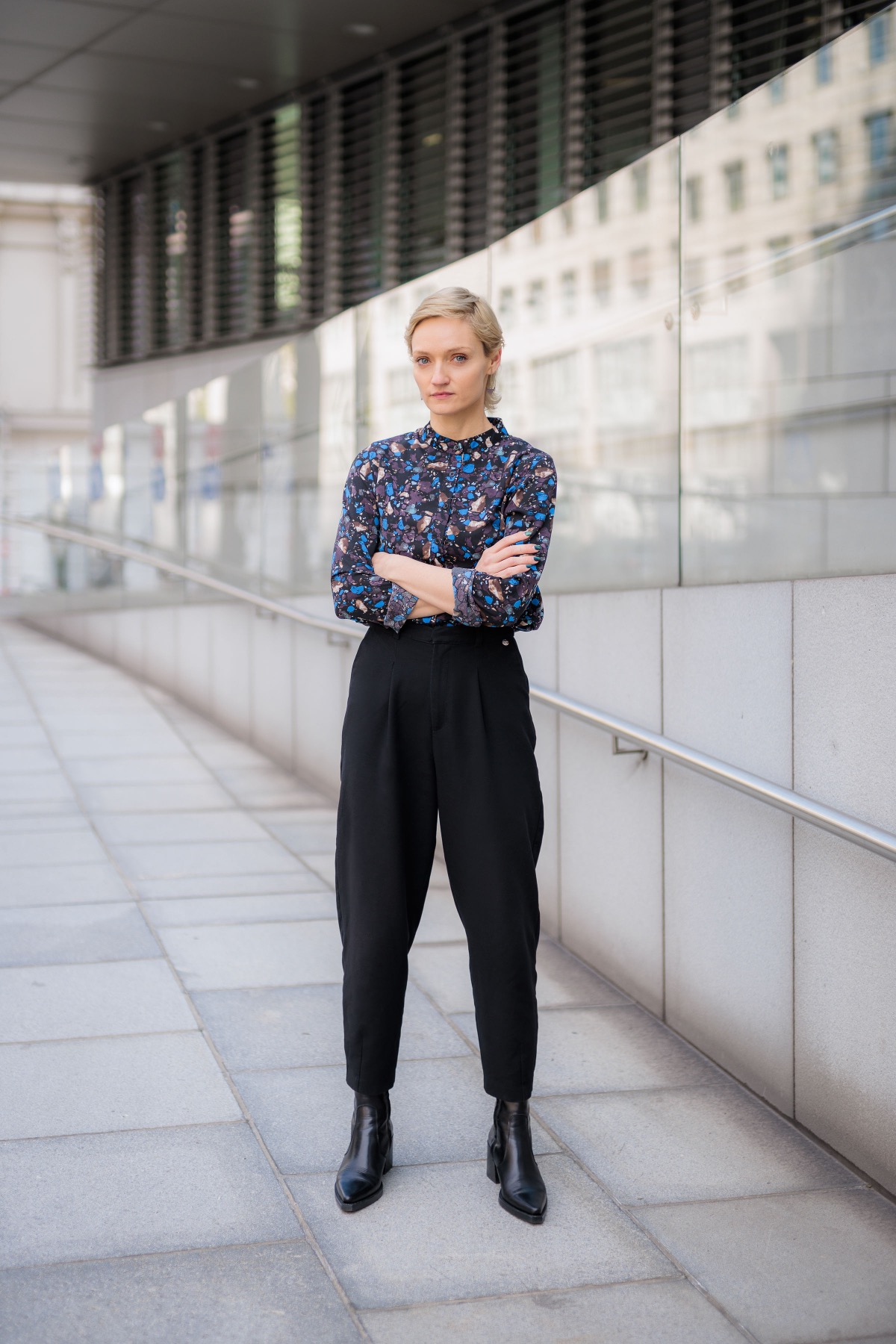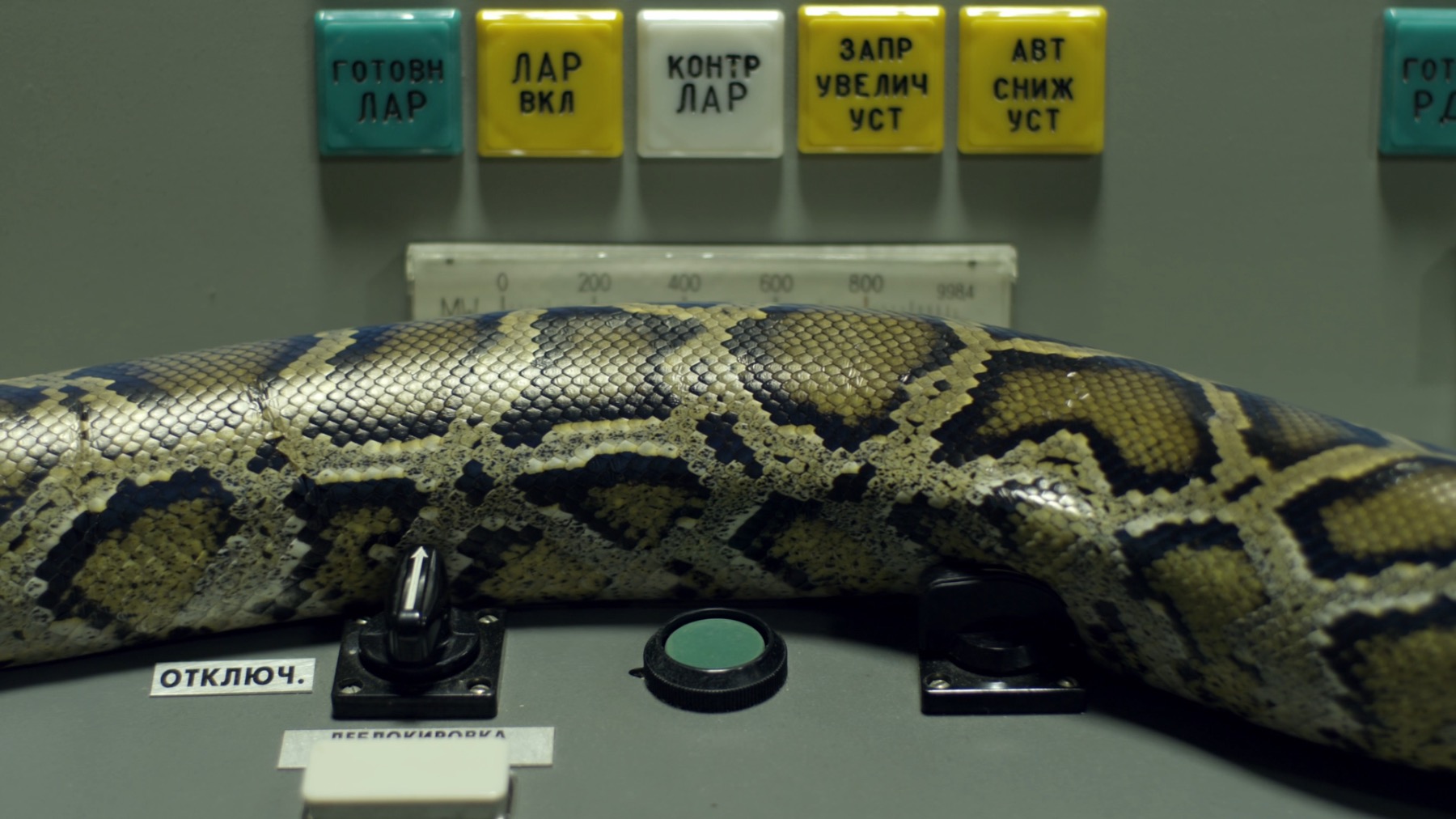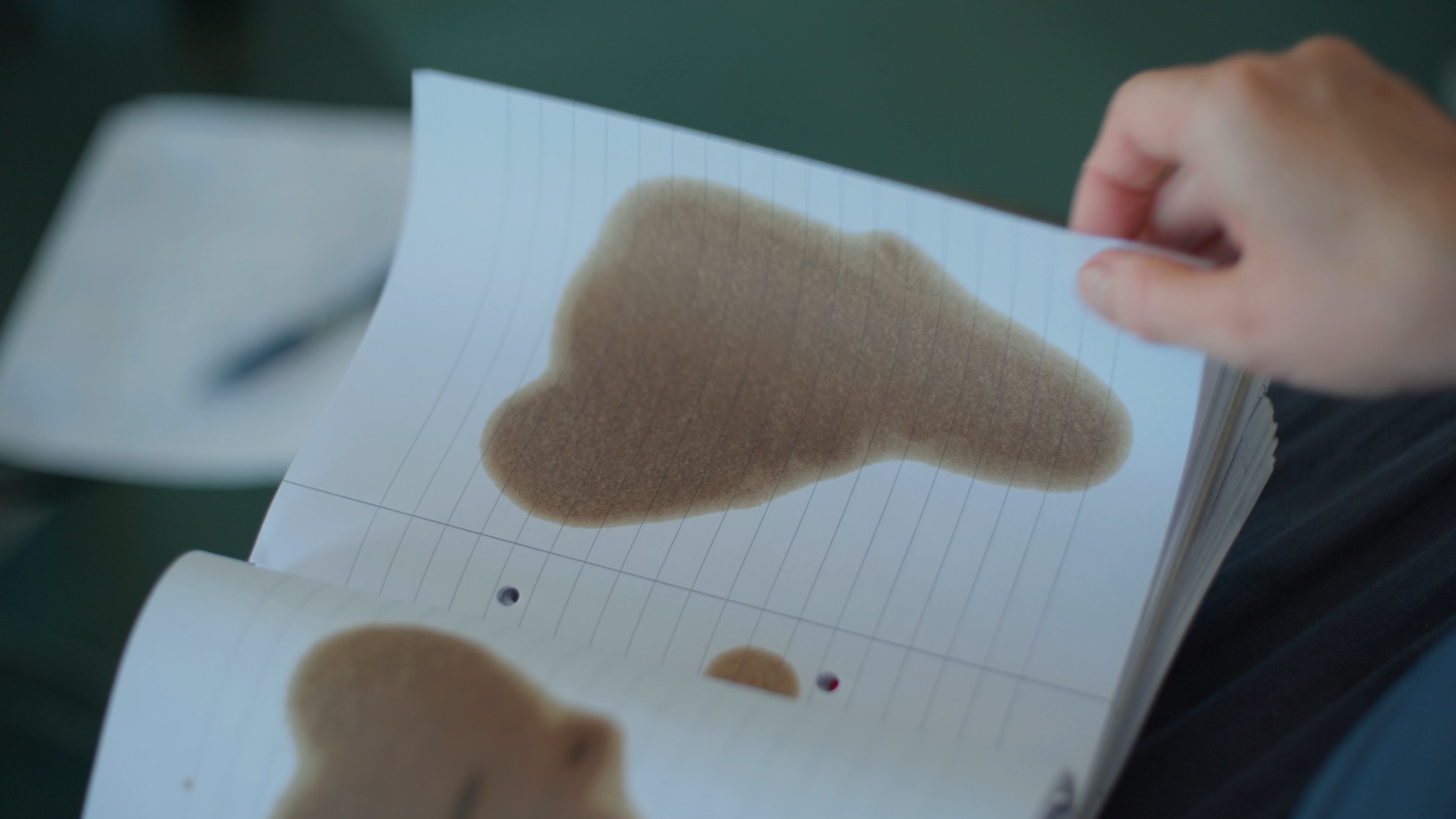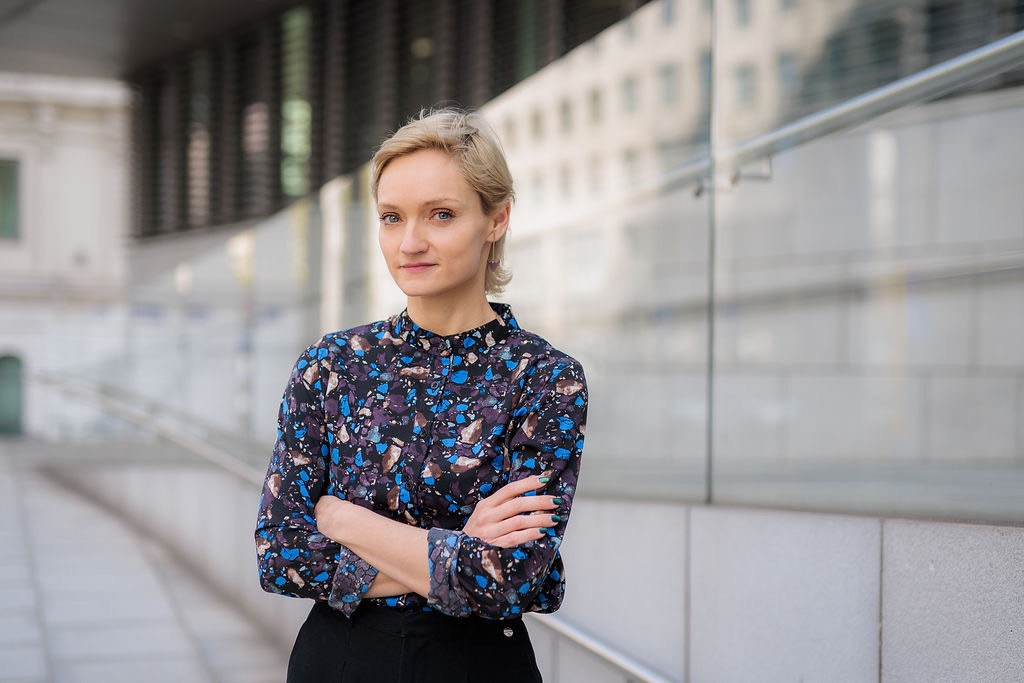
Art can broaden our perspectives
An Interview with Mirela Baciak, Director of Salzburger Kunstverein and Curator of The Color of Energy, a Two-Part Exhibition at viennacontemporary and Salzburger Kunstverein
Mirela Baciak (1987, Warsaw) is a curator in the field of visual arts whose practice is guided by the notion of hospitality as a process that captures one’s ethical relation to the unknown and the strange. Since July 2023 she has been the director at Salzburger Kunstverein, where she recently revealed her first exhibition program under the title Chronic Contradictions. Between 2019 and June 2023 she served as curator at steirischer herbst festival and worked at Public Art Munich 2018. She has held residencies and fellowships worldwide, contributing to exhibitions and research projects. Baciak earned an MA in Critical Studies from the Academy of Fine Arts in Vienna and initiated the AAC | Austrian Association of Curators in 2023.
Currently, Mirela Baciak is the curator of a two-part exhibition titled The Color of Energy, which takes place during viennacontemporary at Messe Wien (September 12 - 15) and continues the following week at Salzburger Kunstverein (September 21 - November 24, 2024).
Anchored in the idea that the primary colors of energy are geopolitics, technology, and people, The Color of Energy seeks to reflect on the often-overlooked energy flows essential for understanding today’s world dynamics. The exhibition explores our entanglements with sources such as the sun and wind, as well as oil, coal, gas, and metals, and highlights how the varying intensities of energy connect politics and cultures.
Creating this exhibition took more than a year, and it will be followed by a program of public discussions under the umbrella title Nexus Thinking – Energy, Future, Sustainability organized by viennacontemporary.
“In the context of the exhibition, there will be two additional panel discussions organized by the team at Vienna Contemporary as part of the VCT Statement program. These discussions will bring together artists, international climate experts and stakeholders from arts and culture, creating a space to publicly address some of the problems, issues, and currents more subtly indicated in the exhibition. I believe the overall approach of the VCT Statement is to be highly transdisciplinary, bringing together people from diverse fields such as politics, lawmaking, and more, with art serving as the catalyst for these conversations.”
“I don't consider myself a theorist; I see myself more as a curator, working with the tools I have. I bring together different artistic perspectives, always starting from the affective and aiming to connect artworks in a way that creates tension between them. This allows for a form of interpretation that emerges only when one work is juxtaposed with another,” says Mirela Baciak.
In our conversation, we discuss the role of art fairs, the integration of art with societal challenges, and the importance of micro-changes as catalysts for larger transformations.
Emilija Škarnulytė, t 1/2, 2019. Courtesy of Emilija Skarnulyte.
The 'Color of the Energy' is a VCT Statement exhibition. How would you characterize the role of art fairs in the current art ecosystem? Are they gradually shifting from their initial function of selling art and being a meeting place to making a greater social impact?
The VCT Statement is a special program initiated by viennacontemporary in 2022, designed to bridge art with societal challenges. This initiative includes a curated thematic exhibition and a series of panel discussions featuring individuals from the fields of art, science, and politics. It's important to emphasize that this is a non-commercial part of viennacontemporary (the artworks displayed within this exhibition are not for sale), supported by the Erste Foundation, and co-produced with the Salzburger Kunstverein, where the second chapter of the exhibition takes place.
I’m relatively new to art fairs, having only begun visiting and following them regularly since 2019. I believe their strength lies in their reach - art fairs attract a large number of visitors in a short amount of time, making them powerful platforms for visibility. They provide opportunities for artists and galleries to connect with each other and with a broader public, and they serve as venues where curators can discover new talents.
As you noted, many fairs incorporate discourse, talks, and special exhibitions into their programs, which I generally think is a positive development. However, I'm uncertain about the social impact of art fairs specifically, though I am convinced of the social impact of art in general. I believe art can broaden our perspectives and deepen our understanding of the world.
Do you think art is the right medium to address such crucial social issues, and what is the most appropriate way for art to speak about them?
I believe that art has its own unique way of addressing societal challenges and problems, which is often more effective and poetic than, for example, academic arguments. I am particularly interested in this language because it allows access to issues on a deeply affective or emotional level. Since we are all quite neurodiverse, for some people, experiencing something through art may be more engaging than through written text.
However, I also tend to interpret exhibitions as essays. They may not use words to form sentences, but they create tensions and narratives that unfold between the artworks, evoking a different kind of understanding of the world—one that I believe is more embodied. When viewing an artwork, your body is actively involved, making it crucial to be present in the exhibition space with both your body and intellect.
Personally, I see this as just another form of communication, and I don't believe in distinguishing between the "right" and "wrong" language. I think all forms of expression are valuable, and these ideas should be conveyed in various ways to reach as many people as possible.
Liv Bugge, Goliat Draugen og Maria, Still. Photo: Marte Vold. Courtesy of the Artist.
Liv Bugge. Photo: Unknown. Source: DaWinci offshore logistics.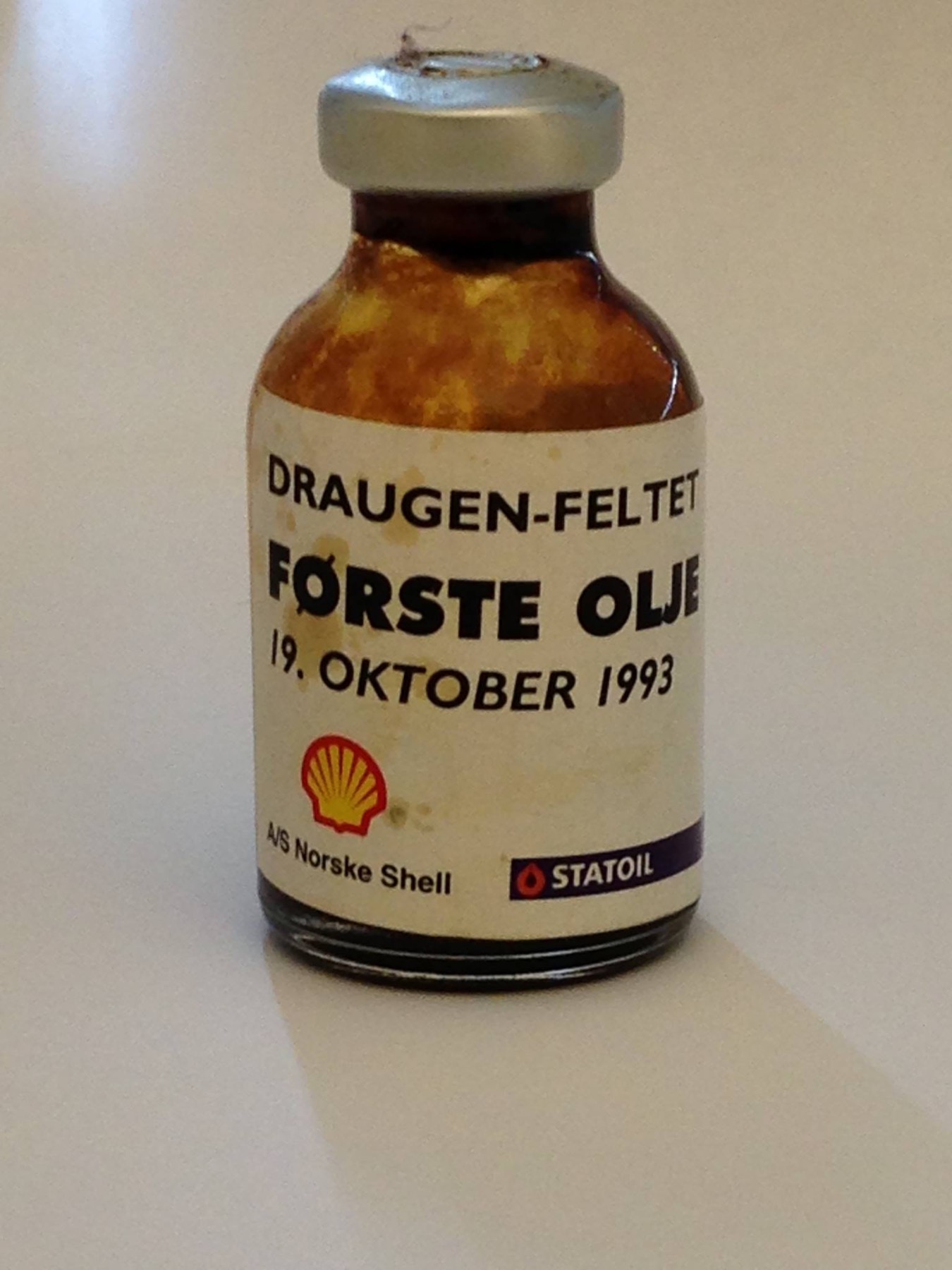
Why did you choose to speak about our relationship with energy through colors? On one hand, it's a very direct approach, but on the other, it's quite metaphysical. Colors are closely connected to emotions and can, in a way, affect our choices and mood as well. Some responses to color stimuli are believed to be the result of the repeated association of color with particular concepts, messages, and experiences.
I aimed to create a more accessible narrative for this complex topic. My approach is associative, but I seek to disassociate certain colors from specific emotions by offering multiple interpretations of what, for example, the color green or red represents in the context of energy. I was also directly inspired by the film The Color of Fear by Mun-Wah Lee, from which I adapted the title.
It is then up to the viewers to engage with the works and answer these questions for themselves.
There is a duality in almost each of the primary colors - does this also reflect our relationship with different sources of energy?
Yes, different energy sources can be seen as having many colors. For example, consider spilled oil; when sunlight reflects on an oily puddle in a parking lot, it creates a rainbow of swirling colors - violet, pink, yellow, and more. This visual reminds me of our relationship with energy; it’s not simply black and white but rather has many shades and complexities.
In your statement, you reference the climate stripes created by Professor Ed Hawkins at the University of Reading in 2018. More than a million people downloaded them from the site within a week of its launch in 2019. However, the extreme rise in global temperatures in 2023 has made it clear that the climate stripes graphic needs updating. The darkest red shown on the current scale no longer accurately reflects the state of the climate, or as Hawkins says, '2023 was off the end of the scale.' It is clear that the warning stripes are just another way of presenting data; the question is - are they working and do they have the power to change mindsets?
The warming stripes are an infographic designed to visualize data, while art has the power to translate information into emotional and experiential contexts. If an artist were to incorporate the warming stripes into a specific context, it could evoke interpretations that might contribute to a shift in mindset, potentially even inspiring change.
A few years ago, an innovative Swiss startup developed a technology to transform human body heat into electricity. We humans are also producers of energy. Almost every artwork, as a medium, is a concentrated form of energy. What if a source of renewable energy for the future were to be found in human beings?
Thanks for bringing that up; the image you're evoking is quite dystopian. I hope humanity finds solutions, but yes, it's possible to imagine such a scenario. Perhaps one day, when we visit a museum, we might need to generate our own energy just to view the artwork. In fact, a friend of mine conducted a similar experiment during an exhibition - visitors had to ride bikes to produce the energy that powered the lights for the display.
During the pandemic, there were extensive discussions about how the art world would change afterward. There were speculations that perhaps there would be fewer art fairs, less traveling, and that the art world would start to think more about sustainability, among other things. Then the first post-COVID Venice Biennale came, and it was the first international event of such scale. There was a feeling that nothing had changed in the world, the same champagne, and everything.
Now, we are living in even more challenging times, with the wars on our doorsteps and the situation becoming increasingly complicated. How do you feel about the role of art in times like these? Does it have to play any role?
You’ve raised another important and very difficult question. I’m not sure if I have the right answers, but I do agree that these are challenging times, and they are likely to become even more so. The acceleration of art production and consumption post-pandemic seems partly driven by people's strong desire to reconnect with the physical world after nearly two years of virtual interactions and isolation.
In these complex and troubling times, I believe art plays a crucial role. It provides a space for people to come together, find allies, and make sense of the world, helping us better understand ourselves and one another.
Sara Bezovšek, www.s-n-d.si, film still, 2021. Courtesy of the Artist.
Could you elaborate a bit on the choice of artists you invited to participate in this project? What criteria or considerations guided your selection, and how do their unique styles or perspectives contribute to the overall vision of the project?
The first artist I invited was Oleksiy Radinsky, with his new film Where Russia Ends, which addresses the critical topic of fossil fascism. I then invited Shubigi Rao, who created a significant body of work in Armenia for her solo exhibition These Petrified Paths at the Rockbund Museum.
Given Norway's pivotal role in global energy debates due to its oil wealth, I felt it was important to include a Norwegian perspective, so I invited Liv Bugge. The debate on nuclear energy also intrigued me, so I brought in Katrin Hornek, who conducts in-depth research on nuclear testing, along with Emilija Škarnulytė. To balance this selection with a more hopeful outlook, I invited Ursula Mayer, who explores post-human ontologies, and Linda Lach, who approaches technology from a very human and sensitive perspective. I am only mentioning a few positions here.
I based my selection on previous research and further exploration of different energy sources and geographies.
Oleksiy Radynski, Where Russia Ends, film still. Courtesy Oleksiy Radynski and Kinotron Group.
The exhibition is divided into two parts: one held at Messe Wien and the other the following week at Salzburger Kulturverein. Could you provide us with an inside look at these two segments and explain how this idea originated?
I was invited to curate the Statement in 2023, just before I was appointed director at Salzburger Kunstverein. I greatly admired the Statement show in 2022, so I proposed extending its scope by co-producing it. This collaboration benefits both institutions and allows the topic to be explored with more space and time. The audience can first experience the initial chapter in Vienna, which I would describe as a brighter and more hopeful one. The second chapter in Salzburg, on the other hand, features darker tones of energy so to speak, with a stronger focus on environmental devastation linked to the climate crisis.
Speaking about your new position as Director of the Salzburg Kunstverein, how do you see the role of public art institutions changing in light of the crises we’re currently experiencing in Europe?
I believe the role of public institutions has always been to serve as spaces where public debates can resonate. Institutions like the Salzburg Kunstverein have long been concerned with societal dilemmas, even before 2019, striving to engage with these issues and create spaces for understanding and discussion through artistic perspectives. In that sense, the role hasn’t fundamentally changed, but perhaps the need for such spaces has intensified, given the numerous crises currently unfolding in Europe and beyond.
It's crucial to create spaces for reflection and deeper understanding - physical, analog spaces where people can gather, rather than relying solely on social media for information. These spaces allow us to come together as strangers, to physically be present with one another, and to experience a public moment. This is something I strive to facilitate through various projects: creating public moments where people come together, where they can either connect or disconnect over something shared, something un/common. The artworks provide the context for these thoughts and connections to evolve.
For me, art is deeply connected with publicness. My most essential experiences come from working in the so-called public, particularly during Public Art Munich in 2018. That experience instilled in me a methodology that I’m also trying to implement at the Salzburg Kunstverein. While the Kunstverein is, of course, a physical building with a defined space, I see this as an advantage. Having a dedicated space creates a certain trust with people - they get used to it, they return. From my perspective, this is a more sustainable way to discuss certain issues and build communities, as it offers a concrete, physical place where people can gather.
Viktor Pedersen. First oil from the Vigdis field, 1997.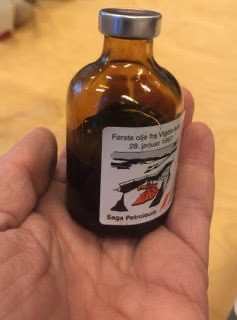
In recent years, there has been much discussion about the role of the arts in mental health and general well-being. Some countries have ongoing “museum prescription” and “art prescription” programs as part of healthcare initiatives. From your viewpoint, what makes art an effective therapeutic tool?
I believe art can be de-traumatizing, yet art is not therapy, so it cannot solve all mental health problems, but I think it can have a supportive role. This is one of art's great strengths: it allows us to address traumatic experiences through and with this special language that is art.
We live in a complex world where understanding these complexities is challenging and might lead to a sense of being lost or burnout. Exhibition spaces offer a reflective environment, allowing time to ponder and try to make sense of what is happening. Unlike reading news articles or books, an exhibition provides a different kind of engagement that is more affective. Although it might be a gradual process, I firmly believe that this engagement with art can positively impact well-being.
With art projects that address crucial social, economic, or political issues, there is always the question of their impact: Do they have the power to effect change?
Measuring change, especially at the individual level, can be challenging. For those involved, the impact can be significant. If bringing people together fosters personal transformation, that alone is valuable. However, we should remain humble about what can be achieved, as the effects of change are often complex and far-reaching. Typically, change occurs through small, incremental shifts - what we might consider micro changes at the individual level and within small communities. Yet, when these micro changes accumulate, they can contribute to something much larger.
Thank you!
Mirela Baciak, Portrait. Photo: kunst-dokumentation.